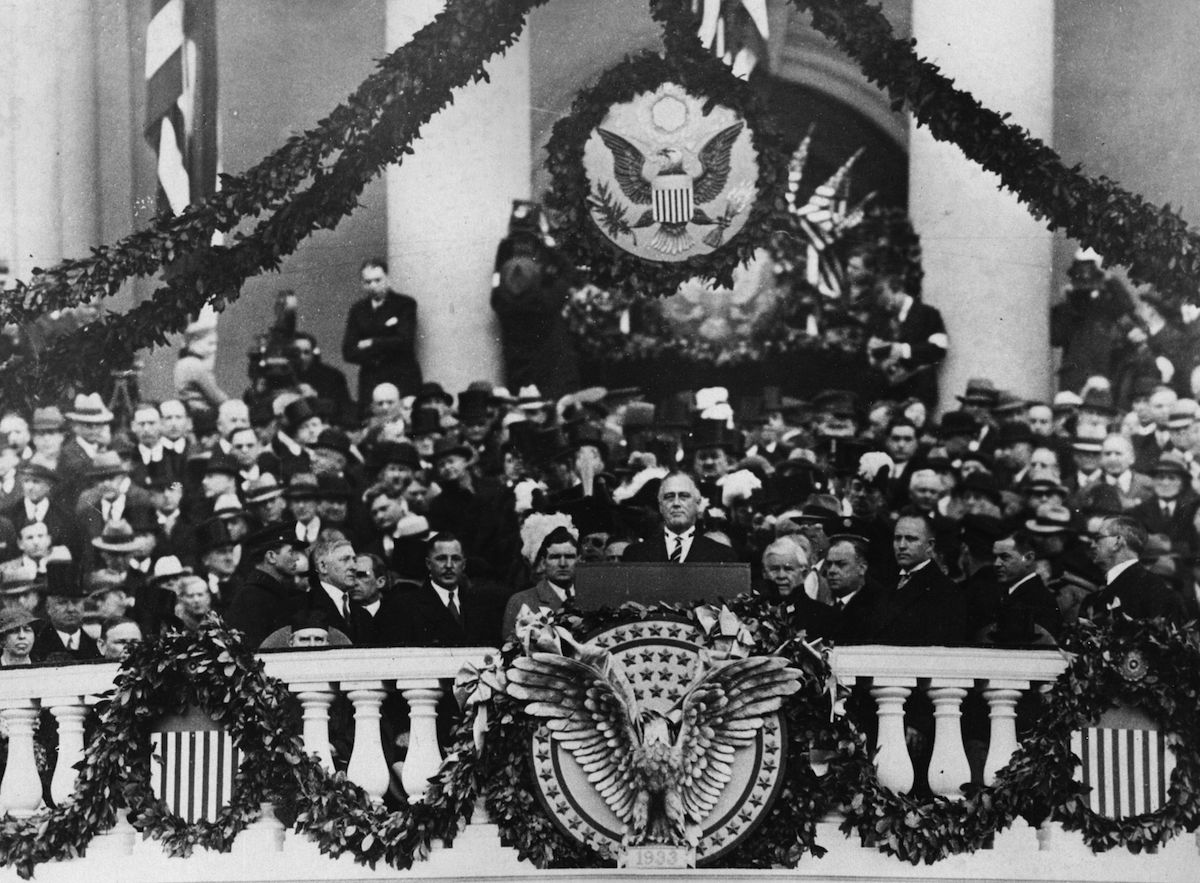
This post is in partnership with the History News Network, the website that puts the news into historical perspective. The article below was originally published at HNN.
The United States has entered a period known as the “interregnum,” the weeks between an election and the taking of office by a new president. Each day, President-elect Donald Trump is announcing the names of the men and women who will staff his West Wing and, with Senate approval, sit around his cabinet table and fill other key positions in his administration.
The appointments are watched closely, daily red meat for the commentators, journalists and job hunters trying to predict where this White House will go—and how they might fit in.
It has been more than eighty years since a president enjoyed a somewhat leisurely period before arriving in the Oval Office. Franklin Delano Roosevelt was elected for the first time on Nov. 8, 1932 and took office on March 4, 1933. His subsequent inaugurals were held on Jan. 20. But even with that first four-month interregnum, FDR’s journey was a roller coaster ride, including an assassination attempt, a P.R. disaster, the failure of thousands of banks and the untimely death of a key cabinet appointment–two days before he was to be sworn in.
Roosevelt was completing his second term as governor of New York when he was elected president and was surrounded by a tight inner circle, most of whom had served him for a dozen years or more. They included his political strategist, Louis McHenry Howe, and his private secretary, Marguerite LeHand. He quickly tapped long-time associates Steve Early and Marvin H. McIntyre to serve as press and appointments secretaries. These four aides led the operations of the West Wing and were known as the White House Secretariat. FDR had a trusted group of policy advisors, known as the Brain Trust, who jumped in to help him form a Cabinet. The leader was Raymond Moley, a professor at Columbia University.
For a man promising “action, and action now,” FDR took his own time forming a government. A few weeks after the election, he boarded a train south to Warm Springs, Georgia, to his vacation cottage that was already known as the Little White House. He was followed by a gaggle of reporters, advisors, Congress members and office seekers. In December he returned to Albany, New York, where he handed over the governor’s office to his successor, and made another visit to Warm Springs in January. Then, he went on vacation.
In a strange move for a politician who had been elected largely by “the forgotten man,” FDR joined his friend Vincent Astor, one of the world’s wealthiest men, for a cruise on his mammoth luxury yacht the Nourmahal. The press went wild, and even his wife Eleanor was appalled. Howe and Moley, left ashore, had to devise elaborate word puzzles in order to alert him of the state of Cabinet appointments, as the ship-to-shore radio was insecure. (Shades of private e-mail controversies!) When Henry Wallace agreed to become secretary of agriculture, the message sent to FDR was “CORN BELT IN THE BAG.”
The yacht made port in Miami in mid-February, and while speaking to an outdoor crowd there, Roosevelt was shot at by an unemployed Italian immigrant. He was unhurt, but one of the shots hit the mayor of Chicago, who had come to plead for federal help. He later died of his wound.
Get your history fix in one place: sign up for the weekly TIME History newsletter
With what Moley termed “a rather savorless Cabinet pudding” in place, the incoming administration focused on the alarming banking crisis. Banks were failing all over the country; ultimately 4,000 would fold in 1933, most in the first two months of the year. Crucial to the rescue plan was to proclaim a bank holiday and require Americans to return cash and gold they had been hoarding at home. This would require an opinion from the incoming attorney general. FDR had nominated distinguished Montana Sen. Thomas J. Walsh, 73, who planned to quickly vet the 1917 Trading with the Enemy Act for this purpose.
But two days before the inauguration, Walsh, who had secretly married a much younger Cuban woman in late February, had a heart attack on the train headed to Washington. (It was snarkily said to be a case of “presumption beyond his powers.”) FDR’s inner circle was in a quandary as to who to name in his place. Finally, the president-elect’s private secretary, Missy LeHand, suggested Homer Cummings, a Democratic lawyer from Connecticut who was slated to become governor general of the Philippines. When presented with the choice, he readily took the Cabinet post in Washington over exile in the South Pacific and dependably served as FDR’s legal yes-man for the next six years.
We can hope that Mr. Trump will not encounter quite as much excitement during his interregnum. But you never know.
Kathryn Smith is the author of the The Gatekeeper: Missy LeHand, FDR, and the Untold Story of the Partnership That Defined a Presidency (Touchstone, Sept. 6, 2016).
More Must-Reads from TIME
- Donald Trump Is TIME's 2024 Person of the Year
- Why We Chose Trump as Person of the Year
- Is Intermittent Fasting Good or Bad for You?
- The 100 Must-Read Books of 2024
- The 20 Best Christmas TV Episodes
- Column: If Optimism Feels Ridiculous Now, Try Hope
- The Future of Climate Action Is Trade Policy
- Merle Bombardieri Is Helping People Make the Baby Decision
Contact us at letters@time.com